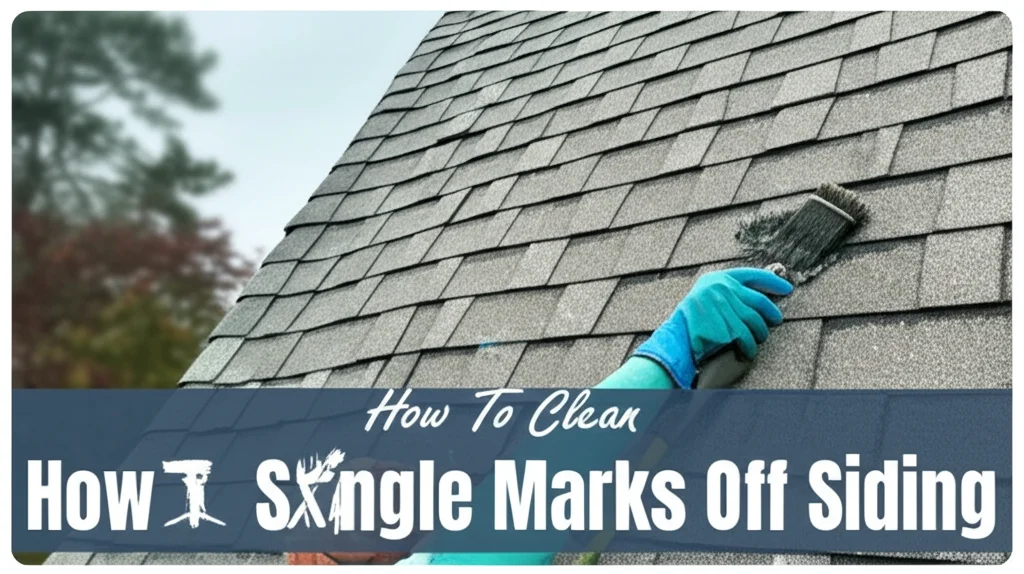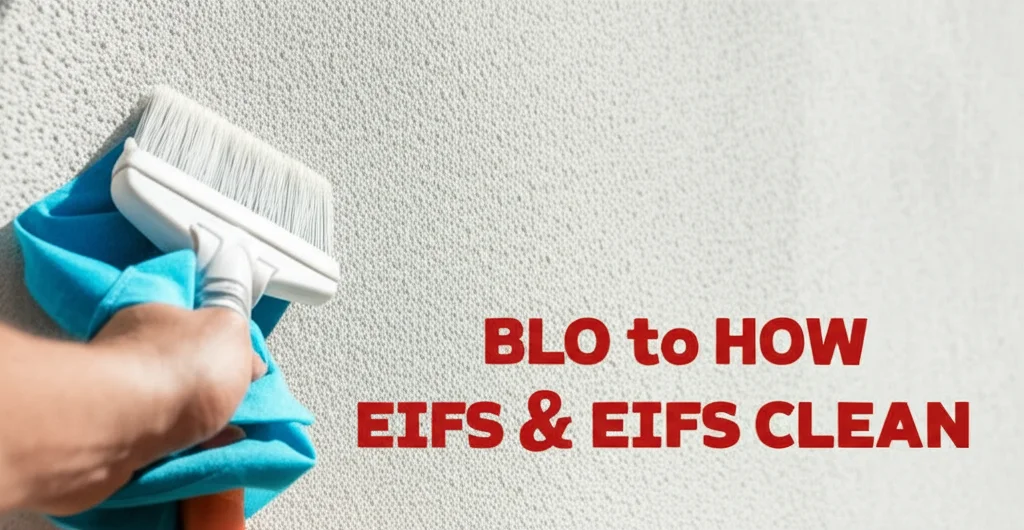· Home Exterior · 7 min read
How To Clean Shingle Marks Off Siding

Removing Shingle Marks: A Guide to Clean Siding
Have you noticed dark, unsightly streaks or marks on your siding, especially after a windy day? These are often caused by granules from asphalt shingles washing down during rainstorms. Don’t worry, you’re not alone! Many homeowners face this issue, and thankfully, cleaning shingle marks off siding is often a manageable DIY project. This article will walk you through everything you need to know to safely and effectively remove these stains and restore your home’s exterior. We’ll cover identifying the marks, gathering the right supplies, and step-by-step cleaning methods.
Cleaning shingle marks off siding doesn’t have to be a daunting task. It’s a common problem, especially for homes with asphalt shingle roofs, and with the right approach, you can significantly improve your home’s appearance. This guide will provide you with the knowledge and techniques to tackle these stains, leaving your siding looking fresh and clean. We’ll explore gentle cleaning solutions, effective scrubbing methods, and preventative measures to keep your siding looking its best.
Quick Answer: Cleaning shingle marks off siding typically involves using a mild detergent, a soft-bristled brush, and careful rinsing. For tougher stains, a dedicated siding cleaner or a pressure washer (used cautiously) may be necessary. Always test any cleaning solution in an inconspicuous area first.
Takeaway:
- Identify the type of siding you have.
- Use gentle cleaning solutions first.
- Always test cleaners in a hidden area.
- Rinse thoroughly to avoid residue.
Understanding Shingle Marks on Siding
Shingle marks aren’t just cosmetic; they can sometimes indicate the age and condition of your roof. Asphalt shingles contain granules that protect the underlying materials from UV rays and weather damage. Over time, these granules loosen and wash away, especially during heavy rain or wind. These granules then accumulate on your siding, creating those dark streaks. Understanding what causes these marks helps you choose the right cleaning approach.
These marks are most common on the sides of your house that are downwind from the roof. The granules themselves aren’t harmful to your siding, but they can be unsightly. Ignoring them won’t make them disappear, and they can even become more difficult to remove over time. Therefore, regular cleaning is a good preventative measure.
Identifying Your Siding Material
Before you start cleaning, it’s crucial to identify your siding material. Different siding types require different cleaning methods. Common siding materials include:
- Vinyl Siding: Durable and relatively easy to clean.
- Aluminum Siding: Requires gentle cleaning to avoid damage.
- Wood Siding: More susceptible to damage and requires careful handling.
- Fiber Cement Siding: Durable but can be porous, requiring specific cleaners.
Knowing your siding type will help you choose the appropriate cleaning solutions and techniques. Using the wrong method could cause discoloration, damage, or even void your warranty.
Gathering Your Cleaning Supplies
Having the right tools and supplies will make the job much easier and more effective. Here’s a checklist of what you’ll need:
- Garden Hose with Spray Nozzle: For rinsing.
- Soft-Bristled Brush: A long-handled brush is ideal for reaching higher areas.
- Bucket: For mixing cleaning solutions.
- Mild Detergent: Dish soap works well for vinyl and aluminum siding.
- Siding Cleaner: Specifically formulated for siding, if needed. You can find these at most home improvement stores.
- Pressure Washer (Optional): Use with extreme caution and a wide-angle nozzle. See the section on pressure washing below.
- Safety Glasses: To protect your eyes.
- Gloves: To protect your hands.
The Gentle Cleaning Method: Soap and Water
For most shingle marks, a simple soap and water solution is all you need. This method is safe for most siding types and is a great starting point.
- Prepare the Solution: Mix a small amount of mild dish soap (about 1/4 cup) with a gallon of warm water in your bucket.
- Apply the Solution: Using your soft-bristled brush, apply the soapy water to the affected areas of your siding.
- Scrub Gently: Gently scrub the siding in a circular motion. Avoid applying excessive pressure, especially on aluminum or wood siding.
- Rinse Thoroughly: Rinse the siding thoroughly with your garden hose, ensuring all soap residue is removed. Soap residue can attract dirt and grime.
This method is effective for removing light shingle marks and general dirt and grime. It’s also a good way to test a small area before using a stronger cleaning solution. If the marks persist, move on to the next method.
Tackling Stubborn Stains with Siding Cleaner
If soap and water aren’t enough, a dedicated siding cleaner can provide more powerful cleaning action. These cleaners are formulated to break down tough stains without damaging your siding.
- Choose the Right Cleaner: Select a siding cleaner specifically designed for your siding material. Read the label carefully and follow the manufacturer’s instructions.
- Dilute the Cleaner: Most siding cleaners need to be diluted with water. Follow the instructions on the product label for the correct dilution ratio.
- Apply and Scrub: Apply the diluted cleaner to the affected areas and scrub gently with your soft-bristled brush.
- Let it Dwell (If Recommended): Some cleaners recommend letting the solution dwell on the siding for a few minutes before rinsing. Check the product label for specific instructions.
- Rinse Thoroughly: Rinse the siding thoroughly with your garden hose, ensuring all cleaner residue is removed.
Always test the siding cleaner in an inconspicuous area first to ensure it doesn’t cause discoloration or damage.
Pressure Washing: A Word of Caution
Pressure washing can be an effective way to remove stubborn shingle marks, but it’s also the riskiest method. Using too much pressure can damage your siding, especially vinyl or aluminum.
- Use a Wide-Angle Nozzle: A wide-angle nozzle (40-degree or wider) distributes the water pressure over a larger area, reducing the risk of damage.
- Keep a Safe Distance: Maintain a safe distance between the pressure washer nozzle and your siding – at least 2-3 feet.
- Start with Low Pressure: Begin with the lowest pressure setting and gradually increase it until you find a setting that effectively removes the stains without causing damage.
- Move in a Consistent Motion: Move the pressure washer nozzle in a consistent, sweeping motion to avoid concentrating the pressure in one spot.
If you’re unsure about using a pressure washer, it’s best to hire a professional siding cleaning service. They have the experience and equipment to safely and effectively clean your siding. You can learn more about professional cleaning services at https://www.beacleaner.com/.
Preventing Future Shingle Marks
Once you’ve cleaned your siding, you can take steps to prevent future shingle marks.
- Regular Roof Maintenance: Regularly inspect your roof for loose or damaged shingles and replace them promptly.
- Install Drip Edge: A drip edge is a metal flashing installed along the edge of your roof that helps direct water away from your siding.
- Trim Overhanging Trees: Trim any trees that overhang your roof to reduce the amount of debris that falls onto your shingles.
- Annual Siding Cleaning: Clean your siding at least once a year to remove accumulated dirt, grime, and shingle granules.
FAQ: Common Questions About Shingle Marks
Q: Are shingle marks permanent? A: No, shingle marks are generally not permanent and can be removed with the right cleaning methods. However, if left untreated for a long time, they can become more difficult to remove.
Q: Can I use bleach to clean shingle marks? A: While bleach can be effective, it’s generally not recommended for siding cleaning. Bleach can damage your siding, discolor plants, and is harmful to the environment.
Q: How often should I clean shingle marks off my siding? A: It depends on your location and the amount of rainfall and wind you experience. Generally, cleaning your siding once or twice a year is sufficient.
Q: What’s the best way to clean wood siding with shingle marks? A: Wood siding requires gentle cleaning. Use a mild detergent and a soft-bristled brush, and avoid using a pressure washer. Always test the cleaner in an inconspicuous area first.
Conclusion: Maintaining a Clean and Beautiful Home
Cleaning shingle marks off siding is a relatively straightforward task that can significantly improve your home’s curb appeal. By understanding the causes of these marks, gathering the right supplies, and following the steps outlined in this guide, you can effectively remove these stains and keep your siding looking its best. Remember to always test cleaning solutions in an inconspicuous area first and to use caution when using a pressure washer. Regular maintenance and preventative measures will help keep your siding clean and protect your investment. Don’t hesitate to seek professional help if you’re uncomfortable tackling the job yourself. A clean exterior is a beautiful exterior! If you’re looking for more cleaning tips and tricks, check out https://www.beacleaner.com/how-to-clean-luxury-vinyl-plank-flooring/ for advice on keeping your interior floors sparkling.




